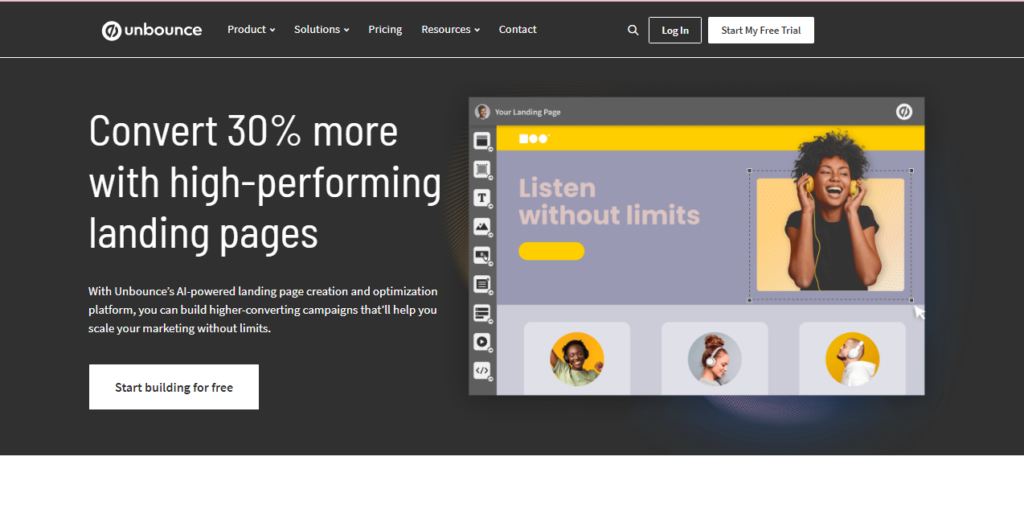
“The Internet has brought communities across the globe closer together through instant communication,” says Mike Fitzpatrick.
And what better way to capitalize on this global connectivity than through virtual summits? These online events are no longer just a way to share information; they’re powerful platforms for building communities, generating leads, and driving massive revenue.
Envision a scenario where you’re hosting a virtual summit, and attendees are eagerly absorbing your insights, connecting with industry leaders, and leaving with a sense of empowerment and a renewed sense of purpose.
You, as the host, are witnessing a surge in sales, partnerships, and brand recognition. This isn’t a dream; it’s the reality for many who have mastered the art of hosting virtual summits.
This post will dive into the world of hosting virtual summits that drive massive revenue. We’ll explore the strategies, techniques, and approaches that turn these events into profit-generating machines.
We’ll uncover the secrets to building a thriving online community, crafting a compelling agenda that keeps attendees engaged, and leveraging your summit to generate leads and boost your bottom line. Get ready to transform your virtual summit from a simple event into a powerful business tool.
TL;DR
- Discover how to plan and execute a virtual summit that attracts a massive audience.
- Learn the secrets to crafting a compelling summit agenda that keeps attendees engaged and coming back for more.
- Master the art of promoting your summit to reach the right audience and generate buzz.
- Uncover the strategies for monetizing your summit and turning it into a revenue-generating machine.
- Get ready to transform your virtual summit from a simple event into a powerful business tool.
Defining Your Virtual Summit’s Purpose
Before diving into the nitty-gritty, let’s start with the foundation: defining your summit’s purpose. What are you aiming to achieve? Are you seeking to:
- Generate leads for your business? If so, consider using a landing page builder like Unbounce or Leadpages to create a dedicated page for your summit, capturing leads through forms and offering valuable content downloads in exchange for email addresses.

- Build your brand authority and credibility? Focus on attracting high-profile speakers and showcasing your expertise through insightful content. Use tools like BuzzSumo to identify trending topics and create valuable content that positions you as a thought leader.
- Launch a new product or service? Use the summit as a platform to generate excitement and pre-orders. Use SurveyMonkey or Typeform to gather feedback from attendees and gauge interest in your new product or service.
- Create a community around your niche? Focus on building a sense of belonging and fostering connections among attendees. Use tools like Slack or Discord to create a dedicated online community where attendees can connect and continue the conversation after the summit.
Once you’ve identified your summit’s purpose, you can start crafting a strategy to achieve it.
Choosing the Right Topic and Target Audience
The success of your virtual summit hinges on selecting a compelling topic that resonates with your target audience.
Ask yourself:
- What problems are your ideal customers facing? Use tools like Google Trends to identify trending topics and pain points in your niche.
- What are their biggest pain points? Conduct surveys or focus groups to gather feedback and insights from your target audience.
- What information or solutions are they desperately seeking? Analyze your website traffic and social media engagement to understand your audience’s interests and needs.
By answering these questions, you can identify a topic that will draw in your ideal audience.
Crafting a Compelling Summit Agenda
A well-structured summit agenda is the backbone of an engaging and informative event. Here’s a step-by-step guide to creating an agenda that keeps attendees hooked:
- Start with a captivating opening keynote: Grab attention from the get-go with a high-profile speaker who can set the tone for the summit. Use SpeakerHub or LinkedIn to find speakers who have a strong online presence and a proven track record of delivering compelling content.
- Break down the content into thematic tracks: Organize your sessions into logical categories that align with your audience’s interests. Use tools like Miro or Google Docs to collaborate on your agenda and assign speakers to different sessions.
- Mix up session formats: Offer a variety of formats, such as keynote speeches, panel discussions, workshops, Q&A sessions, and interactive activities, to keep things fresh and engaging. Use tools like Poll Everywhere or Mentimeter to create interactive polls and quizzes during your sessions.
- Include breakout sessions: Provide attendees with the opportunity to delve deeper into specific topics that resonate with their needs. Use Zoom or Hopin to host breakout sessions and allow attendees to choose the topics that interest them most.
- End with a powerful closing keynote: Leave a lasting impression with a speaker who can summarize the key takeaways and inspire attendees to take action.
Selecting the Right Speakers
The speakers you choose are the heart and soul of your virtual summit. They’re the ones who will deliver the information, insights, and inspiration that your audience craves.
Here’s how to find the perfect speakers:
- Identify industry leaders and thought leaders: Look for speakers who are recognized experts in their field and can provide valuable insights. Use SpeakerHub or LinkedIn to find speakers who have a strong online presence and a proven track record of delivering compelling content.
- Seek out diverse perspectives: Include speakers from different backgrounds, experiences, and viewpoints to offer a well-rounded perspective. Use DiversitySpeaker or SpeakerMatch to find speakers from underrepresented groups.
- Consider your audience’s interests: Choose speakers whose expertise aligns with your audience’s needs and interests. Use Google Analytics to track website traffic and identify your audience’s interests.
- Reach out to speakers personally: Show your enthusiasm and clearly articulate your vision for the summit. Use LinkedIn or Email to connect with potential speakers and invite them to participate.
Marketing Your Virtual Summit
Once you’ve got a solid agenda and stellar speakers, it’s time to start promoting your summit to the world. Here’s a breakdown of key marketing strategies:
- Build a landing page: Create a dedicated landing page that provides all the essential information about your summit, including the date, time, speakers, agenda, and registration details. Use tools like Wix, Squarespace, or WordPress to build your landing page.
- Leverage social media: Promote your summit across various social media platforms, using targeted ads and engaging content to reach your ideal audience. Use tools like Buffer or Hootsuite to schedule your social media posts and track your engagement.
- Partner with influencers and industry leaders: Collaborate with influencers and industry leaders to spread the word about your summit and tap into their existing audience. Use LinkedIn or Twitter to connect with influencers in your niche and propose collaborations.
- Send out email blasts: Use email marketing to keep your audience informed about the summit and encourage registration. Use tools like Mailchimp or Constant Contact to send out email blasts and keep your audience informed.
- Offer incentives: Provide early bird discounts, free bonuses, or exclusive content to incentivize early registration. Use Eventbrite or Ticketleap to manage your ticket sales and offer discounts.
Monetizing Your Virtual Summit
Now, let’s talk about how to turn your virtual summit into a revenue-generating machine. Here are some proven monetization strategies:
- Ticket sales: Charge attendees a fee to access the summit content. Use tools like Eventbrite or Ticketleap to manage your ticket sales.
- Sponsorships: Partner with brands that align with your audience and offer sponsorship packages that provide exposure and value. Use LinkedIn or Twitter to connect with potential sponsors and propose collaborations.
- Affiliate marketing: Promote products or services related to your summit’s theme and earn commissions on sales. Use Amazon Associates or ShareASale to find affiliate programs that align with your summit’s content.
- Membership programs: Offer exclusive access to summit content, recordings, and community forums for a recurring fee. Use tools like Memberful or Podia to create and manage your membership program.
- Product launches: Use the summit as a platform to launch new products or services and generate pre-orders. Use Shopify or WooCommerce to create an online store and sell your products or services.
Actionable Steps for Hosting Virtual Summits That Drive Massive Revenue
For Beginners:
- Define your niche: Identify a specific topic or industry that you’re passionate about and where you have expertise. This will help you attract a targeted audience. For example, if you’re a marketing expert, you could focus on a niche like “Content Marketing for Small Businesses” or “Social Media Strategies for Startups.”
- Choose a platform: Explore options like Zoom, Hopin, or Livestorm, considering ease of use, features, and pricing. Zoom is a great option for smaller summits, while Hopin offers more advanced features for larger events. Livestorm is a good choice for interactive webinars and Q&A sessions.
- Plan your agenda: Start with a compelling opening keynote and break down content into thematic tracks. Include diverse session formats like Q&A, workshops, and panel discussions. For example, a summit on “Content Marketing for Small Businesses” could have tracks on “Blog Writing,” “Social Media Strategies,” and “Email Marketing.” You could use tools like Miro or Google Docs to collaborate on your agenda and assign speakers to different sessions.
- Promote your summit: Create a landing page using tools like Wix, Squarespace, or WordPress. Leverage social media platforms like LinkedIn, Twitter, and Facebook to reach your target audience. Offer incentives like early bird discounts to encourage registration. Use tools like Mailchimp or Constant Contact to send out email blasts and keep your audience informed.
For Experienced Hosts:
- Refine your target audience: Go beyond demographics and understand their specific needs and pain points. Use tools like Google Analytics to track website traffic and identify your audience’s interests. Conduct surveys or focus groups to gather feedback and insights.
- Elevate your speaker selection: Seek out high-profile speakers who are not only experts but also engaging presenters. Use platforms like SpeakerHub or LinkedIn to connect with potential speakers. Look for speakers who have a strong online presence and a proven track record of delivering compelling content.
- Develop a unique selling proposition: What makes your summit stand out? Offer exclusive content, networking opportunities, or valuable takeaways. For example, you could offer a downloadable workbook with actionable strategies or host a networking event where attendees can connect with industry leaders.
- Implement advanced marketing strategies: Utilize targeted ads on platforms like Facebook or Google Ads. Collaborate with influencers in your niche to promote your summit to their audience. Use email marketing automation tools like Mailchimp or ActiveCampaign to send personalized emails and nurture leads.
For Those Seeking Revenue Generation:
- Explore multiple monetization strategies: Combine ticket sales with sponsorships, affiliate marketing, or membership programs. Use platforms like Eventbrite or Ticketleap to manage ticket sales. Partner with brands that align with your audience and offer sponsorship packages that provide exposure and value. Promote products or services related to your summit’s theme and earn commissions through affiliate marketing programs. Offer exclusive access to summit content, recordings, and community forums through membership programs.
- Offer valuable content: Provide attendees with actionable insights, practical tips, and valuable resources that they can implement immediately. Create downloadable workbooks, templates, or checklists that attendees can use after the summit. Offer a Q&A session with speakers to provide personalized advice and support.
- Create a sense of community: Foster connections among attendees through networking events, Q&A sessions, and online forums. Use tools like Slack or Discord to create a dedicated online community where attendees can connect and continue the conversation after the summit.
- Track your results: Analyze key metrics like registration numbers, engagement, and revenue to identify areas for improvement. Use tools like Google Analytics to track website traffic and social media engagement. Monitor email open rates and click-through rates to gauge the effectiveness of your marketing campaigns.
Common Mistakes to Avoid
- Not defining your target audience: Failing to identify your ideal audience can lead to a lack of engagement and low registration rates.
- Solution: Conduct thorough market research to understand your target audience’s demographics, interests, pain points, and needs. Use tools like Google Analytics to track website traffic and identify your audience’s interests. Conduct surveys or focus groups to gather feedback and insights.
- Choosing the wrong speakers: Selecting speakers who aren’t relevant to your audience or who lack charisma can hinder the summit’s impact.
- Solution: Choose speakers who are not only experts in their field but also engaging presenters. Look for speakers who have a strong online presence and a proven track record of delivering compelling content. Use platforms like SpeakerHub or LinkedIn to connect with potential speakers.
- Ignoring marketing and promotion: Underestimating the importance of marketing can result in a low turnout and missed opportunities.
- Solution: Develop a comprehensive marketing plan that includes a mix of strategies, such as social media marketing, email marketing, influencer collaborations, and paid advertising. Use tools like Mailchimp or Constant Contact to send out email blasts and keep your audience informed. Use platforms like Facebook or Google Ads to run targeted ads.
- Not providing value: Failing to deliver valuable content and insights will leave attendees disappointed and unlikely to return for future events.
- Solution: Focus on delivering high-quality content that is relevant to your audience’s needs and interests. Offer practical tips, actionable strategies, and valuable resources that attendees can implement immediately. Create downloadable workbooks, templates, or checklists that attendees can use after the summit. Offer a Q&A session with speakers to provide personalized advice and support.
- Not monetizing effectively: Overlooking monetization strategies can result in a missed opportunity to turn your summit into a profitable venture.
- Solution: Explore multiple monetization strategies, such as ticket sales, sponsorships, affiliate marketing, and membership programs. Choose a mix of strategies that align with your goals and target audience. Use platforms like Eventbrite or Ticketleap to manage ticket sales. Partner with brands that align with your audience and offer sponsorship packages that provide exposure and value. Promote products or services related to your summit’s theme and earn commissions through affiliate marketing programs. Offer exclusive access to summit content, recordings, and community forums through membership programs.
Frequently Asked Questions
Q: How do I get started with hosting a virtual summit?
A: Start by defining your purpose and target audience. What do you want to achieve with your summit? Who are you trying to reach? Once you have a clear understanding of your goals, you can start crafting a compelling topic and agenda. Research popular platforms and choose one that aligns with your needs and budget.
Q: What are some essential elements of a successful virtual summit agenda?
A: A well-structured agenda is key to keeping attendees engaged. Start with a captivating opening keynote to grab attention. Break down the content into thematic tracks that align with your audience’s interests. Mix up session formats to keep things fresh and engaging, including keynote speeches, panel discussions, workshops, Q&A sessions, and interactive activities. Include breakout sessions to allow attendees to delve deeper into specific topics. End with a powerful closing keynote to leave a lasting impression.
Q: How do I find the right speakers for my virtual summit?
A: Identify industry leaders and thought leaders who are recognized experts in their field. Seek out diverse perspectives to offer a well-rounded experience. Consider your audience’s interests and choose speakers whose expertise aligns with their needs. Reach out to speakers personally and clearly articulate your vision for the summit.
Q: How can I effectively market my virtual summit?
A: Start by building a dedicated landing page that provides all the essential information about your summit. Leverage social media, using targeted ads and engaging content to reach your ideal audience. Partner with influencers and industry leaders to tap into their existing audience. Send out email blasts to keep your audience informed and encourage registration. Offer incentives like early bird discounts, free bonuses, or exclusive content to incentivize early registration.
Q: What are some strategies for monetizing my virtual summit?
A: Consider charging attendees a fee to access the summit content. Partner with brands that align with your audience and offer sponsorship packages. Promote products or services related to your summit’s theme and earn commissions through affiliate marketing. Offer exclusive access to summit content, recordings, and community forums through membership programs. Use the summit as a platform to launch new products or services and generate pre-orders.
Q: How can I ensure my virtual summit is accessible to everyone?
A: Make sure your platform is accessible to individuals with disabilities. Provide closed captions, transcripts, and alternative formats for content. Consider using a platform that offers accessibility features.
Q: What are some tips for creating engaging virtual summit content?
A: Focus on delivering high-quality content that is relevant to your audience’s needs and interests. Use a variety of formats, such as presentations, panel discussions, Q&A sessions, and interactive activities, to keep things fresh and engaging. Incorporate visuals, polls, and interactive elements to enhance engagement.
Q: How can I build a community around my virtual summit?
A: Encourage interaction and networking among attendees. Create a dedicated online forum, social media group, or Slack channel where attendees can connect and continue the conversation after the summit. Host networking events or Q&A sessions to foster connections.
Q: What are some tools that can help me manage my virtual summit?
A: There are many tools available to help you with everything from event planning and registration to marketing and audience engagement. Some popular tools include Eventbrite, Mailchimp, Hootsuite, Zoom, Hopin, and Livestorm.
Q: How can I measure the success of my virtual summit?
A: Track key metrics such as registration numbers, attendee engagement, lead generation, and revenue generated. Analyze your data to identify areas for improvement and refine your strategies for future events. Use analytics tools to track website traffic, social media engagement, and email open rates.
Ready to Launch Your Revenue-Generating Virtual Summit?
Hosting a virtual summit is a powerful way to connect with your audience, build your brand, and generate revenue. By following these tips and strategies, you can create a successful event that leaves a lasting impact.
And remember, sometimes the most impactful changes start with small, simple steps. As the video “How To Instantly Upgrade Your Life” reminds us, even seemingly insignificant actions can lead to significant transformations. So, take that first step, plan your virtual summit, and watch as it transforms your business and your life.
For More Free Videos, Subscribe to the Rhodes Brothers YouTube Channel.
Join the Rhodes Brothers YouTube Channel for the latest videos and information to help you succeed in your virtual summit endeavors. We’re here to support you every step of the way!
Resource List
Books:
- “Content Rules” by Ann Handley
- “This is Marketing” by Seth Godin
- “Jab, Jab, Jab, Right Hook” by Gary Vaynerchuk
Podcasts:
- “The Eventual Millionaire” by Jaime Masters
- “Marketing School” by Neil Patel and Eric Siu
- “The Gary Vaynerchuk Audio Experience” by Gary Vaynerchuk
- “The Social Media Marketing Podcast” by Michael Stelzner
Tools:
- Zoom: Virtual meeting platform for hosting webinars, workshops, and Q&A sessions.
- Hopin: Virtual event platform for hosting large-scale summits with advanced features.
- Livestorm: Platform for hosting interactive webinars and Q&A sessions.
- Eventbrite: Event ticketing and registration platform.
- Ticketleap: Event ticketing and registration platform.
- Mailchimp: Email marketing platform for sending out newsletters and promotional emails.
- Constant Contact: Email marketing platform for sending out newsletters and promotional emails.
- Buffer: Social media scheduling tool for planning and publishing content across multiple platforms.
- Hootsuite: Social media management platform for scheduling posts, tracking analytics, and managing multiple accounts.
- Google Analytics: Website analytics platform for tracking traffic, user behavior, and conversion rates.
- SpeakerHub: Platform for connecting with speakers and finding experts for your summit.
- LinkedIn: Professional networking platform for connecting with speakers, influencers, and potential sponsors.
- Wix: Website builder for creating landing pages and websites.
- Squarespace: Website builder for creating landing pages and websites.
- WordPress: Content management system for building websites and landing pages.
- Unbounce: Landing page builder for creating high-converting landing pages.
- Leadpages: Landing page builder for creating high-converting landing pages.
- BuzzSumo: Content analysis tool for identifying trending topics and popular content.
- SurveyMonkey: Survey platform for gathering feedback from your audience.
- Typeform: Survey platform for creating interactive surveys and forms.
- Slack: Communication platform for building online communities and collaborating with teams.
- Discord: Communication platform for building online communities and collaborating with teams.
- Google Trends: Tool for identifying trending topics and popular search queries.
- Miro: Collaborative whiteboard tool for brainstorming, planning, and organizing your summit.
- Google Docs: Online document editor for collaborating on agendas and other documents.
- Poll Everywhere: Platform for creating interactive polls and quizzes.
- Mentimeter: Platform for creating interactive polls and quizzes.
- SpeakerMatch: Platform for finding speakers who align with your summit’s theme.
- Memberful: Platform for creating and managing membership programs.
- Podia: Platform for creating and managing membership programs.
- Shopify: E-commerce platform for creating online stores.
- WooCommerce: E-commerce plugin for WordPress.
- Amazon Associates: Affiliate program for promoting products on Amazon.
- ShareASale: Affiliate network for connecting with merchants and promoting products.
Virtual Summit Cheat Sheet
- Define your purpose: What are you aiming to achieve with your summit?
- Choose the right topic and target audience: Identify a topic that resonates with your ideal audience.
- Craft a compelling agenda: Structure your sessions to keep attendees engaged.
- Select the right speakers: Choose experts who can deliver valuable insights.
- Market your summit effectively: Reach your target audience through various channels.
- Monetize your summit: Turn your event into a profitable venture.
- Avoid common mistakes: Learn from the experiences of others.
- Measure your success: Track key metrics to identify areas for improvement.






